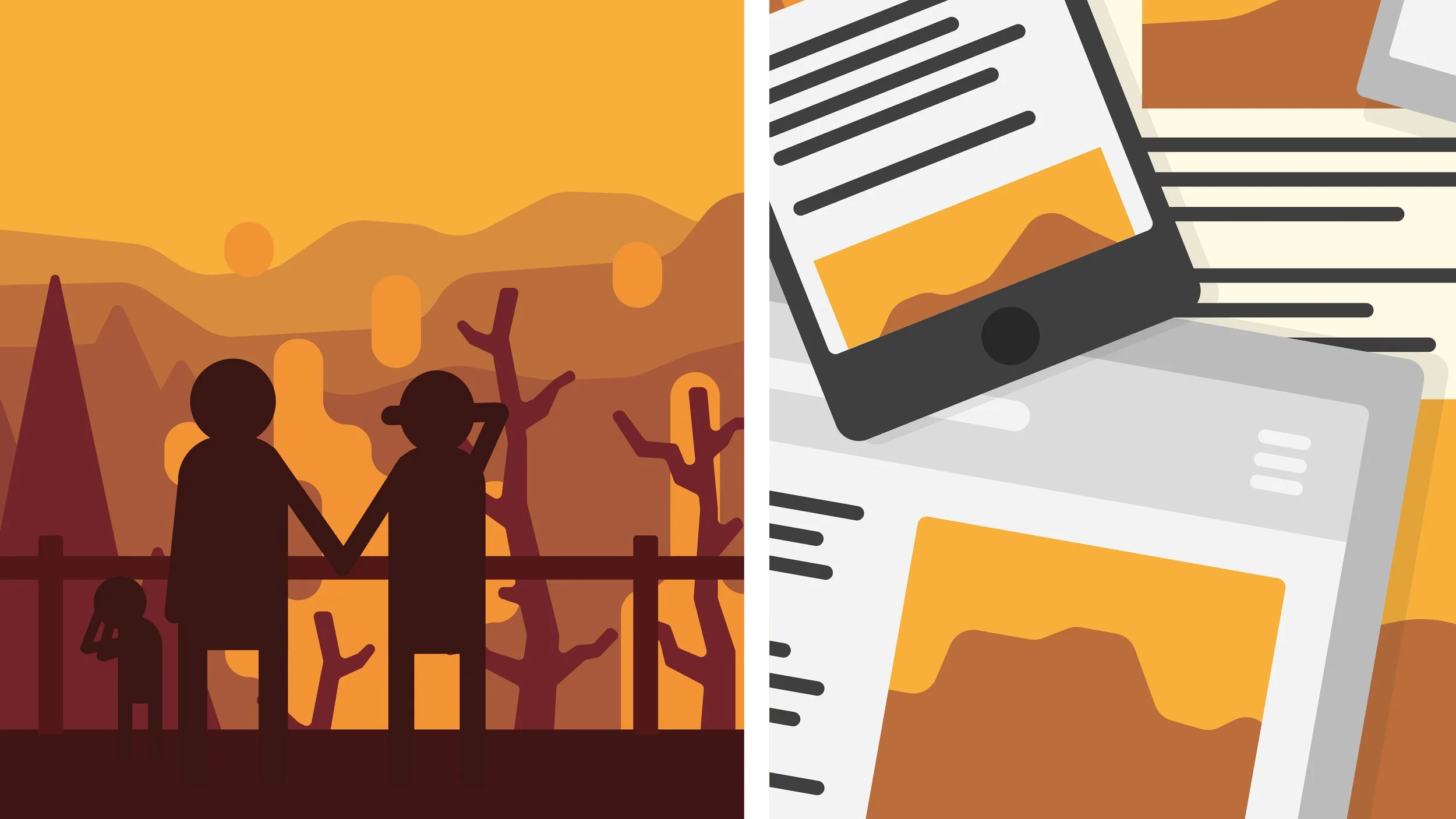
Case Study - Animation
A series of 90-second animations to communicate the research and findings from the Grantham Institute for Climate Change and the Environment’s recent Briefing Papers.
The project:
The client, a communications manager for the institute, approached us having worked with us previously when he was employed by a different organisation. We had worked with him on several motion graphics animations, so had already established a good rapport and a positive working relationship which enabled far more fluid project management.
The client reached out to us again after identifying a requirement for the institute to increase the accessibility of their research papers to a wider range of audiences. The Grantham Institute’s mission is to contribute to and lead, world-class research, training and innovation towards effective action on climate change and the environment. We believed animation would be an effective way to communicate the important work the institute does in a way that is accessible to all.
The Grantham Institute began with a series of 90-120-second animations focused on the findings of their research, often in collaboration with other research centres within Imperial College. We agreed early on that each animation would not exceed 2 minutes so as not to overwhelm audiences given the nature of the technical and scientific topics. Stylistically, we had a slight challenge in developing a look and feel that appealed to variety of audiences, from subject matter experts, to government and businesses who do not necessarily have any pre-existing knowledge about the subjects being discussed. In terms of design, we needed not to detract too far from the existing Grantham Institute brand, similarly, each animation needed to feel like something Imperial College would produce. We had to take care to ensure the graphics did not feel cartoon-like or juvenile. It was important to consider throughout all aspects of the animation including narration, music and sound design. There were also a number of scientific figures within the briefing papers that had to be adapted for the animation.
Our approach.
Pre-production
We benefitted from our pre-existing relationship with the project stakeholder. The ease with which we were able to establish a game plan for the animation series assured us both that we were on the same page. A lot of groundwork went into the early stages of pre-production to ensure the style would fit future animations and the series would remain coherent.
It was also here in these initial discussions that we established the preferred modes of communication throughout the project. We agreed that we would use Trello and email, involving the commissioning team during each stage of production. Trello would be used additionally as a tool to provide the client with artistic concepts and options for decisions on elements such as voiceover artists and music tracks.
Next, we established a crystal clear schedule of deliverables per project, specifying when the client could expect to receive various updates.
Script development
We were fortunate that we received headlines for the briefing papers which are a good starting point for the narrated component of the animation. We had decided with the client that the animations would be narration-led with the visuals emphasising the spoken content. The key here for us was to develop scripts that included as much information and as many of the research findings as we could in a relatively short time frame of 90 seconds. For the narration, we settled on a pretty quick word count of 160 words per minute (with a total of 240-300 words per script) to convey a good quantity of information without rushing or overwhelming our audience.
The scripts were developed collaboratively along with the relevant research teams and briefing paper authors to ensure scientific accuracy.
At this point, given the technical nature of the projects, we recorded additional guide voiceover tracks to demonstrate how the scripts would eventually ‘sound’ for the final video. This helped to inform a few changes. Often we find that a script needs to be heard before it can be approved.
Storyboard and style frames
Once the scripts had been approved, we were in a better position to start thinking about how some of the visual aspects of the animation might come together. As discussed we had to bear the existing visual identity and scientific figures in mind when coming up with visual concepts. Again, we were required to consult the papers’ authors to ensure that our visual concepts accurately depicted the ideas that were being communicated. These rough storyboards were hand drawn, and then scanned so they could be sent in a digital format. Gradually we were able to digitise the sketches in order to start creating higher-fidelity renderings of the artwork.
Illustration
The next stage, once the project team had approved the storyboard, was to begin developing the vector artwork in Adobe Illustrator. Again, by referring closely to the existing visual identity, we were able to develop a unique look and feel that gave the visual concepts life but appeared as if they ‘belonged’ with the rest of the Grantham Institute brand.
We established a flat illustrative style, which allowed us to convey a complex subject matter in a concise, digestible format and balance the necessary scientific detail with clear illustrated visuals.
Voiceover
During pre-production, we agreed that the voiceover narration, above all, should have the following characteristics:
Authoritative but warm;
Dynamic but calm;
Articulate but relatable.
After finding and providing several viable options we found voiceover artists to perform the scripts for the videos. In order to give clear directions on timings and pronunciation, we provided a guideline voiceover track. The briefing paper authors and research team were able to consult on the pronunciation on the more specialist language within the script.
Music and sound design
We opted for a whimsical style of music. One of the key phrases we searched for when looking on stock sites was ‘documentary’ music. We really wanted music that bubbled away nicely in the background without being too distracting.
We wanted the tracks to have quite serious undertones whilst retaining a ‘playful’ element. The length of the music tracks we acquired had to be edited in Adobe Audition in order to match the 90 second duration of the video.
The sound design bed was fairly minimal for both animated videos. Hyperrealistic foley was used to augment the on-screen visual elements. Sound design was created and then edited using Adobe Premiere using some minimal processing and effects in order to achieve an experience that felt hyperreal while, at the same time, very organic.
Motion design
Before even touching Adobe After Effects, for the animation part of production it was important we were 100% sure that the illustrated visual content worked within the context and timing of the voiceover. We therefore created a guide voiceover and animated to this before commissioning the professional narration.
Careful layering of artwork helped to streamline the motion design process. All files and comps would be appropriately structured to make the animation much easier and quicker to work with.
We took care at the animation stage to ensure all kinetic typography and character animation was smooth and fluid, each scene flowing effortlessly into the next with exaggerated easing adhering to Google's Material Design principals for speed and motion.
We were in regular contact with the commissioning team throughout this process to ensure our work was aligned with the client’s artistic vision. This helped to avoid any big surprises or amends at the end of production.
Final editing and subtitles
Adobe Premiere was used again at the end to bring all of the component parts together including the rendered animation, music, professional voiceover and sound design. Premiere gives us the opportunity to do one final check to make sure all component parts are working in harmony. This stage also provides a good opportunity to make any last minute tweaks.
There is an additional opportunity during this phase to produce the subtitles for the animation. Typically, clients will request versions both with and without subtitles with an accompanying .srt file for when videos are being uploaded to YouTube or social media.
Once that stage is complete, all that’s left is for us to send the final versions over to the client, making any final small tweaks if required. We usually find there aren’t too many amends at this stage, particularly if we have been in regular contact with project teams throughout production.
In conclusion:
This project provided ample opportunity to utilise our varied skills. Despite the relatively short turnaround of 3-4 weeks per animation, we were proud to have produced a series of portfolio-worthy animations that have led to us receiving more work from the client. The benefit of working closely with the client from the outset is that we now have an established style in place that will be easy to replicate for subsequent videos; also reducing lead times.

“We really enjoyed working with the team and are very happy with the finished product
The Fat Panda team provided a clear structure for developing our videos from conception to completion with lots of creative ideas along the way to help us communicate our key messages in a simple, yet engaging, manner.”
Dr Neil Jennings
Partnership Development Manager, Imperial College London
You might also like:
The Animation Process
We’ll take you through the entire process of creating an animation that will capture your viewer’s attention.
Case Study
Animation
IMSE - Imperial College London
Case Study
Video
University of Huddersfield - Graduation













